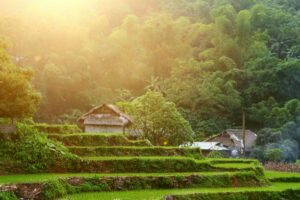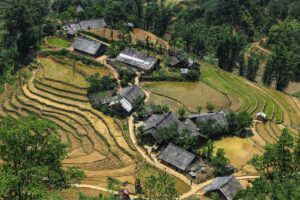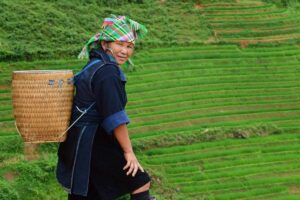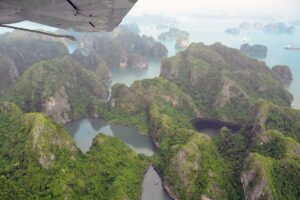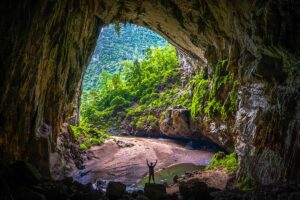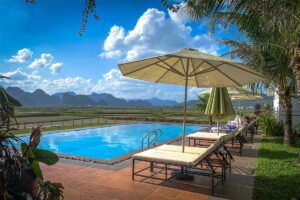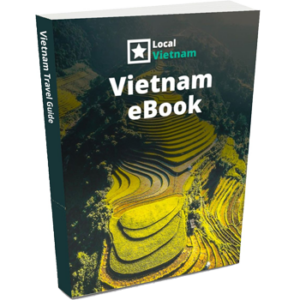Muong Hoa Valley, nestled in the heart of Sapa, is renowned for its breathtaking landscapes, lush terraced rice fields, and vibrant ethnic cultures. This picturesque valley is a gateway for trekking enthusiasts, offering a unique glimpse into the traditional way of life of the local hill tribes and the natural beauty that defines northern Vietnam.
- About Muong Hoa Valley
- Location, getting there and around
- Map of Muong Hoa Valley
- 10 Highlights of Muong Hoa Valley
- Best time to visit Muong Hoa Valley
- Tips for visiting Muong Hoa Valley
About Muong Hoa Valley
The gateway of trekking in Sapa
Muong Hoa Valley is the starting point for most trekking adventures in Sapa. Its diverse terrain and stunning vistas make it a prime location for both novice and experienced trekkers. The valley’s trails wind through terraced fields, local villages, and forested areas, providing a comprehensive experience of the region’s natural and cultural beauty.
Terraced rice fields

The terraced rice fields of Muong Hoa Valley are a marvel of agricultural engineering. These terraces were meticulously carved into the mountainsides by the local ethnic groups over centuries. They not only provide a means for sustainable farming but also create a stunning, layered landscape that changes color with the seasons—from the vibrant green of the growing season to the golden hues of the harvest.
Cultures
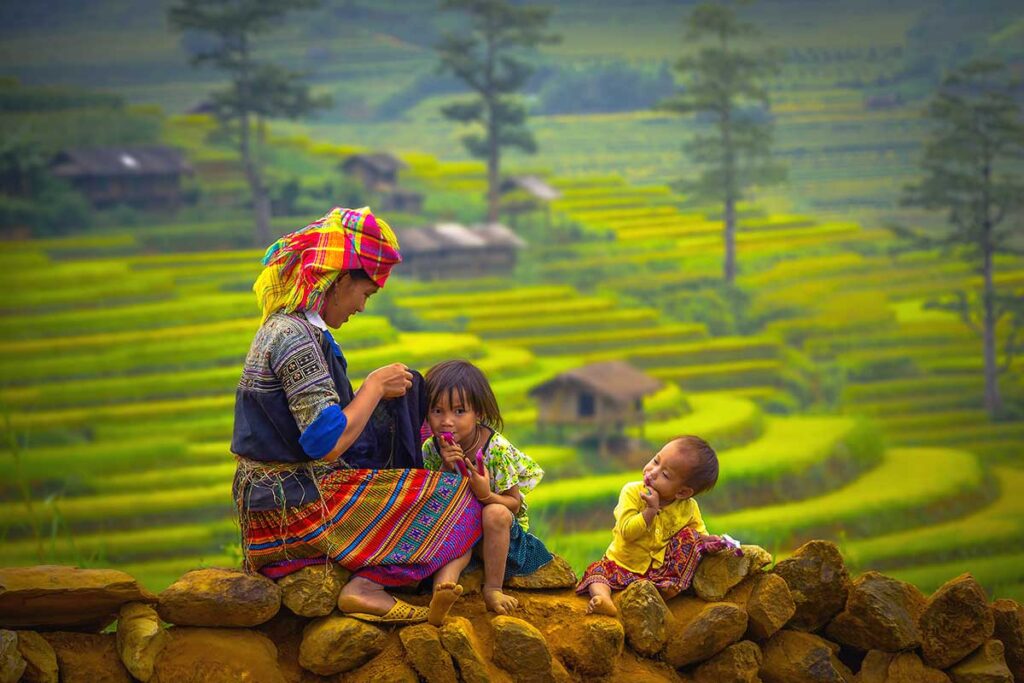
The rich cultural tapestry of Muong Hoa Valley is woven by its diverse ethnic groups, including the Hmong, Dao, and Tay people. These communities have lived in the valley for generations, maintaining traditions that seem untouched by modernity. Their unique clothing, intricate embroidery, and traditional crafts offer a glimpse into a way of life that has remained largely unchanged for hundreds of years. Each group has its own language, customs, and agricultural practices, contributing to the valley’s cultural richness.
Nature
Muong Hoa Valley boasts a diverse natural landscape, encompassing towering mountains, dense forests, and serene bamboo groves. The Muong Hoa River meanders through the valley, providing a lifeline for the communities and a source of tranquility for people. Numerous waterfalls grace the valley, some seasonal and others flowing year-round, adding to the allure of this natural paradise.
Location, getting there and around
Starting from Sapa
The Muong Hoa Valley is located near Sapa town, in the province of Lao Cai. The first step in exploring this beautiful valley is to get to Sapa. For a detailed guide, you can refer to our comprehensive article on traveling from Hanoi to Sapa. Here’s a brief overview:
- Train: The train journey from Hanoi to Lao Cai takes about 8 hours. From Lao Cai town, you can take a car to Sapa. Tourist trains offer a nice experience with comfortable amenities.
- Limousine Buses: These buses run during the day and offer a comfortable and affordable option, taking about 5 hours to reach Sapa.
- Sleeper Buses: Sleeper buses drive during the night, allowing you to save daytime for exploring. However, not everyone finds them comfortable or safe for sleeping, so they are not highly recommended. The journey takes about 6 hours.
Muong Hoa Road

From Sapa town, Muong Hoa Valley is easy to find. Drive through the town, pass the lake and the stone church, and you’ll reach the valley’s entrance, where hotels overlook the stunning scenery. Here, Muong Hoa Road (TL152) begins. This road runs through the valley, mainly higher up on the mountain, providing beautiful views of the terraced rice fields. The road is not a highway and primarily serves tourists and locals, so traffic is manageable, though it can get busy during peak seasons.
Muong Hoa Road offers several viewpoints to enjoy the iconic rice fields. While there are side roads leading down into the valley, connecting small villages, the main road itself provides a convenient route for exploring the area without hiking. Here are the best ways to get around:
- Electric Cart: Electric carts are a fun and eco-friendly way to explore the valley. They are available for hire in Sapa and can take you to various viewpoints and villages.
- Car with Driver: Hiring a car with a driver is a comfortable and flexible option. Drivers are familiar with the area and can take you to specific spots, ensuring a smooth journey.
- Rent Motorbike: For those comfortable on two wheels, renting a motorbike offers freedom and adventure. However, be mindful of safety, especially on the winding mountain roads.
- Rent Motorbike with Driver: If you’re not confident driving a motorbike yourself, hiring one with a driver is a great option. The driver will navigate the roads, allowing you to enjoy the scenery safely.
Roads Between the Villages in the Valley
The villages in Muong Hoa Valley are interconnected by smaller roads, which are unsuitable for cars or electric carts. While locals use motorbikes on these paths, it’s safer for tourists to walk. These paths are excellent for hiking between villages, providing a closer look at local life and the stunning landscape.
Trekking & Hiking
The small roads and trails between the villages are perfect for trekking and can be explored without a guide. However, keep in mind that arranging meals along the way can be challenging, as the local ethnic people often don’t speak English. Additionally, ending your hike outside of Sapa can make it difficult to arrange transportation back, as taxis are not readily available on Muong Hoa Road.
For these reasons, many travelers opt for organized trekking tours. These tours include transfers, meals, and an English-speaking guide. Guided tours also allow you to explore off-the-beaten-path trails, including those through rice fields and bamboo forests, offering a more immersive experience.
Map of Muong Hoa Valley
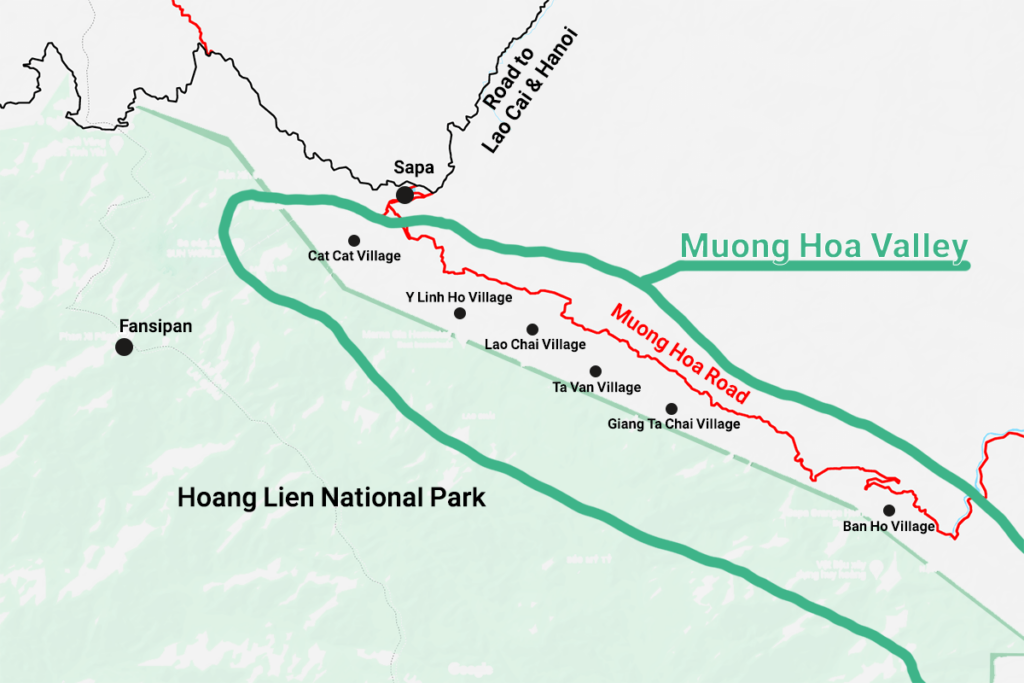
Above is the map of Muong Hoa Valley, highlighting some of the more popular villages (not all) in the valley. You can also see Sapa and the area of Hoang Lien National Park. Please note that the smaller roads connecting these villages are not indicated on this map.
10 Highlights of Muong Hoa Valley
1. Trekking tours
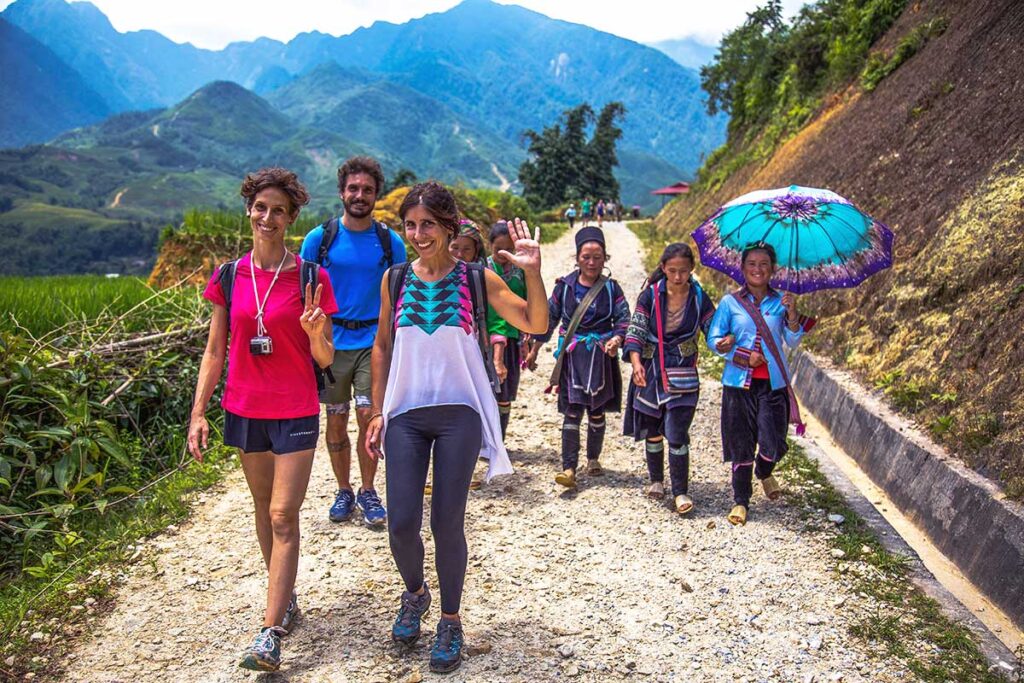
Trekking is the best way to discover Muong Hoa Valley, allowing you to immerse yourself in the stunning landscapes and vibrant local cultures. There are various trekking options to suit different preferences and fitness levels:
- Short Treks: Ideal for those with limited time or less trekking experience. These can be completed in a few hours and cover popular spots within the valley.
- Long Treks: For the more adventurous, longer treks can take a full day or even multiple days, offering deeper exploration into remote areas.
- Multiple Day Treks with Overnight Stays: These treks involve staying overnight in local homestays, providing a more immersive cultural experience.
Popular routes include both well-trodden paths and off-the-beaten-track trails. You can choose to trek with or without a guide, though guided treks are recommended for a more informative experience. There are group tours, which are cheaper and still provide a great experience, and private tours, which offer more flexibility and can be tailored to your needs.
Tip: Our travel agency, Local Vietnam, can help you find the best trekking options based on your preferences and fitness level. We offer both group and private tours. Private tours are especially suitable if you are unsure about completing a trek, as they can be adjusted on the go, and are also great for families with children.
2. Local ethnic villages
Muong Hoa Valley is home to several ethnic groups, including the Hmong, Dao, and Tay people. These communities live in traditional villages that dot the valley. Some of the notable villages you can visit include:
- Ta Van Village: Known for its scenic beauty and the hospitality of its residents.
- Lao Chai Village: Offers insight into the traditional way of life of the Black Hmong people.
- Giang Ta Chai Village: A Red Dao village known for its unique customs and traditional crafts.
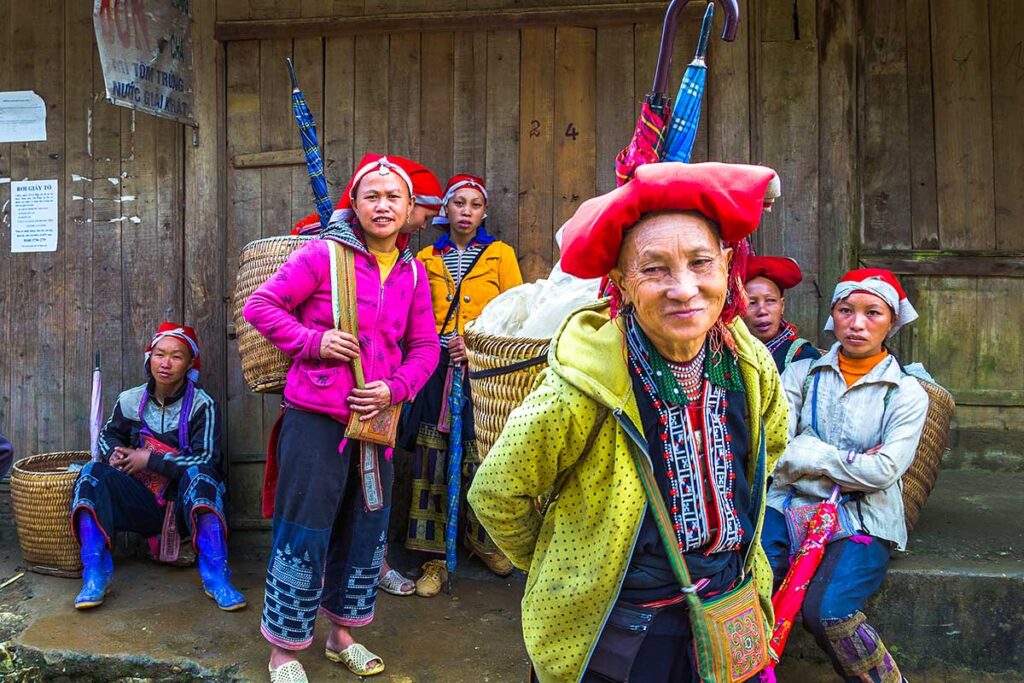
You can expect to see traditional houses, meet locals in their colorful traditional attire, and witness daily activities such as farming and handicraft making. These villages provide a unique glimpse into a way of life that has remained largely unchanged for generations.
You can visit these villages in several ways:
- Trekking tours: Most trekking tours include visits to two or more villages.
- By car: If trekking isn’t suitable, you can arrange a car to take you to these villages, allowing you to explore at your own pace. The car can wait for you and then take you to the next destination or back to your accommodation.
3. Driving along Muong Hoa Road
While trekking is the best way to explore Muong Hoa Valley, driving along Muong Hoa Road (TL152) is a great alternative for those who prefer not to trek. This road runs through the valley and offers stunning views of the terraced rice fields and the surrounding nature.
- Electric cart: A fun and eco-friendly way to explore the valley. Available for hire in Sapa, these carts can take you to various viewpoints and villages.
- Car with driver: A comfortable and flexible option. The driver can take you to specific spots, ensuring a smooth journey.
- Rent motorbike: For those comfortable on two wheels, renting a motorbike offers freedom and adventure. However, be mindful of safety, especially on the winding mountain roads.
- Rent motorbike with driver: If you’re not confident driving a motorbike yourself, hiring one with a driver is a great option. The driver will navigate the roads, allowing you to enjoy the scenery safely.
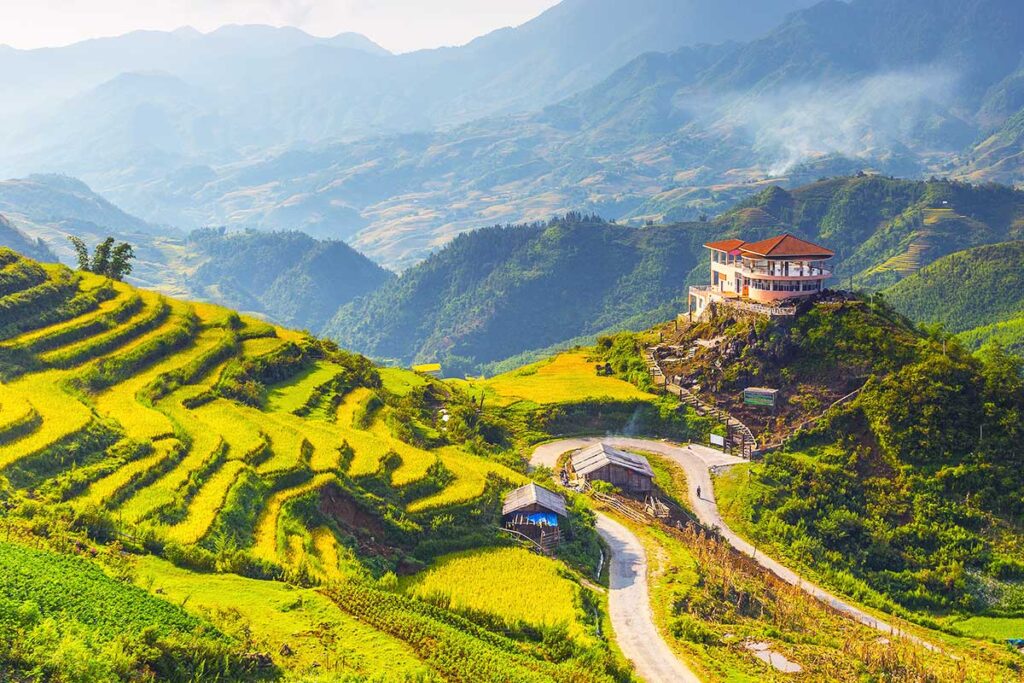
The first part of Muong Hoa Road is the most scenic, offering the best views of the terraced rice fields and several viewpoints where you can stop and take in the beauty. There are also coffee shops where you can enjoy a drink while soaking in the view. As you drive further, the terraced fields become smaller, and the landscape becomes more forested and less touristy. However, the road quality can decline the further you go.
4. Homestay experiences
Staying in a homestay in Muong Hoa Valley offers a unique and immersive cultural experience. There are two main types of homestays available:
- Modern Homestays: These can’t truly be called homestays as they are often not family-run and sometimes quite luxurious. They may offer bungalow-style rooms and even have amenities like a pool. However, they still provide a more personal experience compared to larger hotels in Sapa town and are located in the beautiful countryside, offering stunning views and a cozy atmosphere.
- Authentic Minority Homestays: These are much more basic and provide a genuine glimpse into the local way of life. Expect hard mattresses, dorm-style accommodations, and very basic facilities. However, they do have Western toilets, showers, and mosquito nets. Staying here is an experience you will not forget, as you get to see how the locals live, cook on open fires, and enjoy meals together at the family dinner table. Some homestays, especially those run by the Dao ethnic people, offer traditional herbal baths.
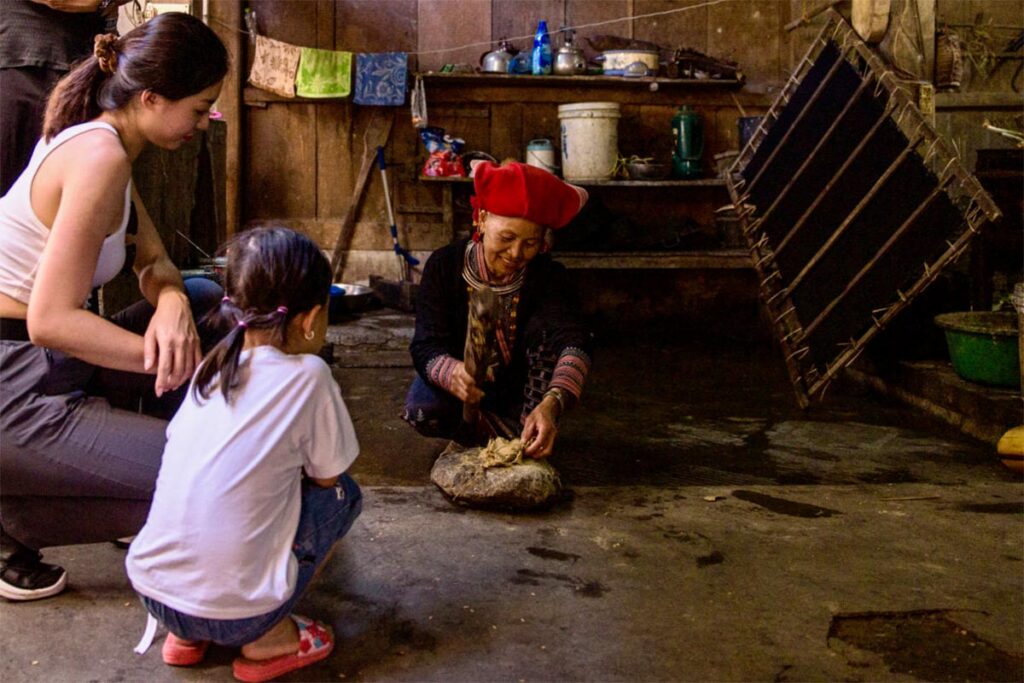
5. Lodge or Resort with a view
While a stay with a local minority family is unforgettable, enjoying the luxury of a lodge or resort with epic mountain views is also amazing. Imagine waking up, opening your balcony doors, and seeing the terraced rice fields of Muong Hoa Valley.
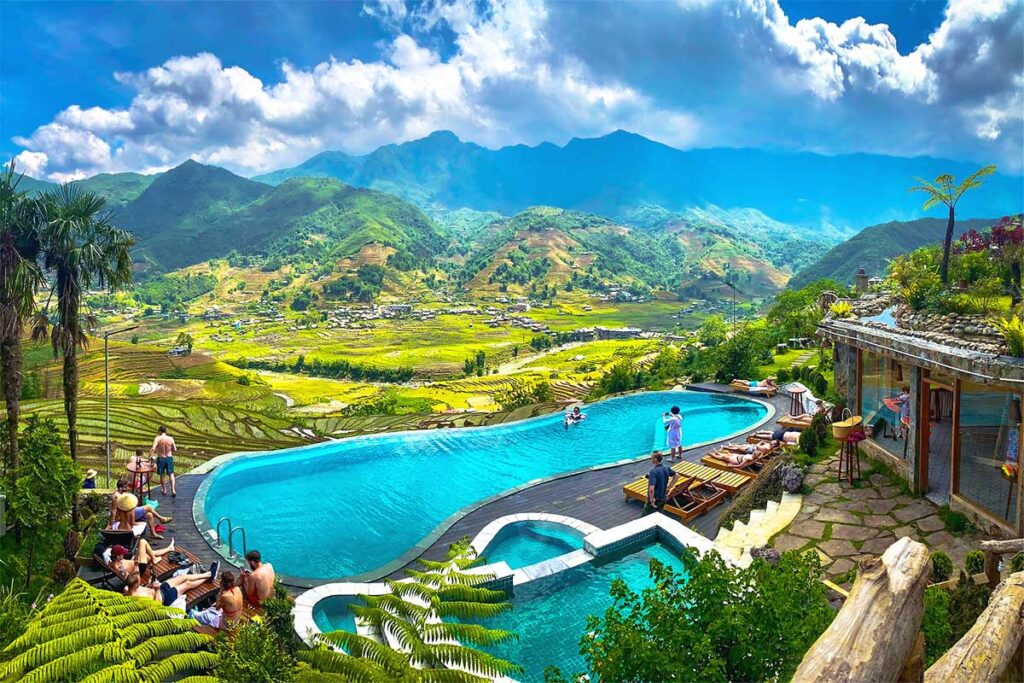
Most resorts and lodges are located at the beginning of Muong Hoa Road, offering the highest and best views. Some resorts also provide excellent amenities, including restaurants and infinity pools overlooking the rice fields. It’s a world of difference from the simple homes of the ethnic people, offering a different but equally wonderful experience.
Check here our list of best resorts with a view in Sapa.
6. Mountain train through Muong Hoa Valley
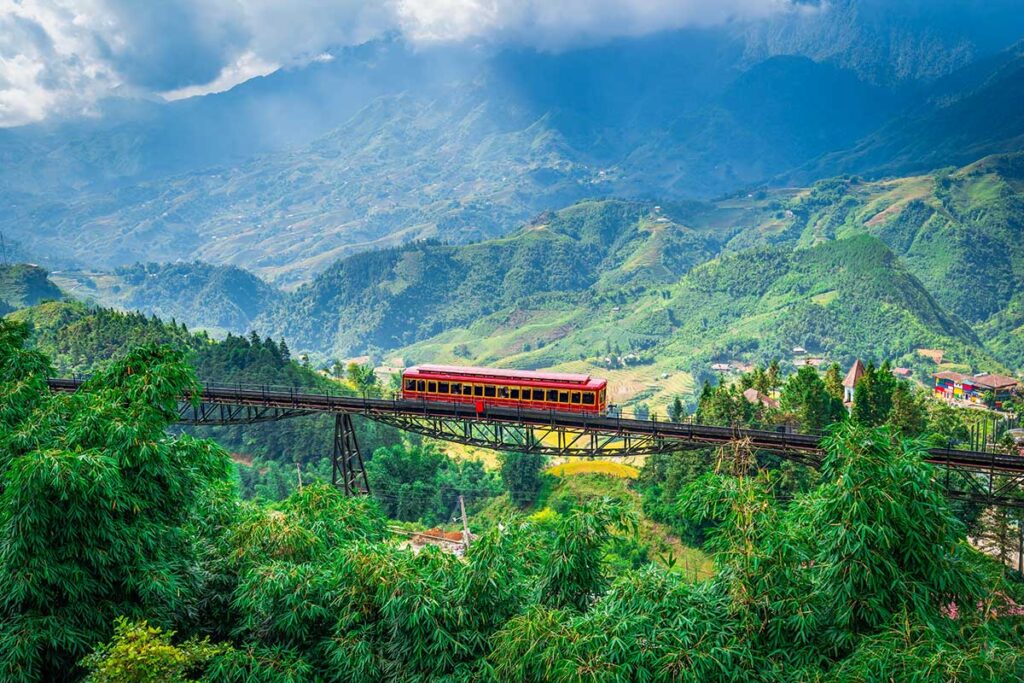
The mountain train in Muong Hoa Valley offers a scenic and memorable ride, covering a small but breathtaking part of the valley. This train connects Sapa town with the cable car station for Fansipan Mountain, providing a picturesque journey through lush landscapes. The route spans approximately 2 kilometers and takes about 10 minutes to reach the cable car station. Despite its brevity, the ride offers spectacular views of the terraced rice fields and the surrounding mountains. The train runs regularly throughout the day, every 20 to 30 minutes, making it convenient for travelers. While tickets can be purchased on the spot, booking in advance is recommended during peak tourist seasons.
7. Muong Hoa River
The Muong Hoa River flows gracefully through the heart of the valley, playing a crucial role in the irrigation of the terraced rice fields. This serene river enhances the valley’s picturesque scenery, especially during the rainy season when it swells and forms small waterfalls along its course.
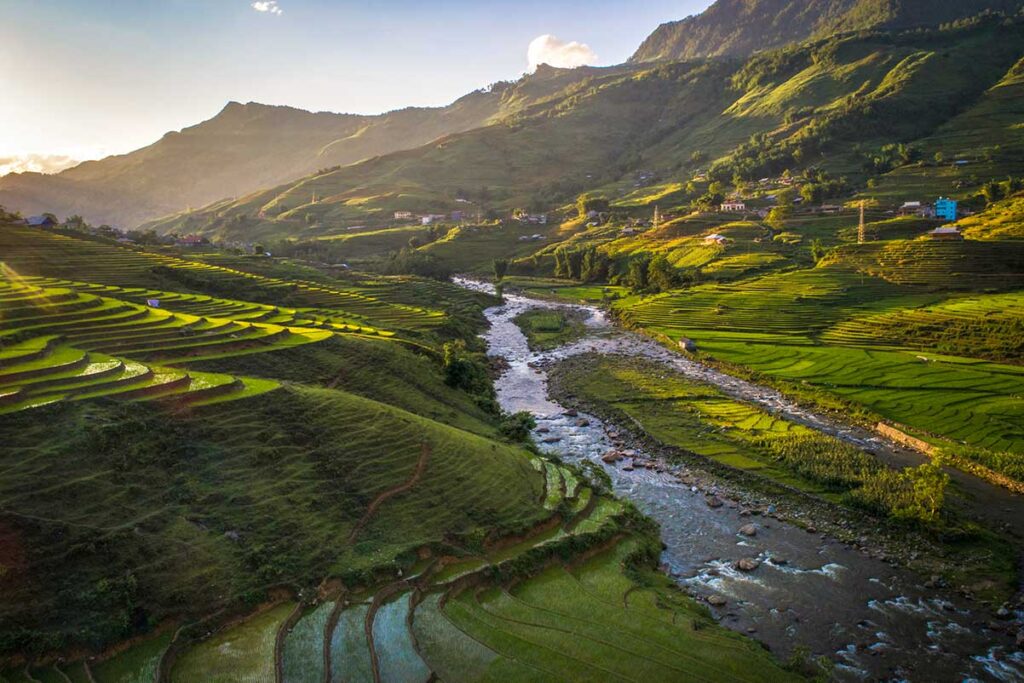
The river is vital for local agriculture and sustains the traditional farming practices of the ethnic communities. You can enjoy serene walks along the riverbanks, take photos of the stunning landscapes, or even have a picnic by the river, making it a perfect spot for relaxation and reflection.
8. Bamboo forest

Tucked away in the valley, you’ll find pockets of bamboo forests offering a serene escape from the bustling trails. These verdant groves provide a cool and shady respite, with the gentle rustling of bamboo leaves creating a soothing soundtrack. Explore the winding paths, breathe in the fresh air, and soak in the peaceful atmosphere.
9. Ancient rock field
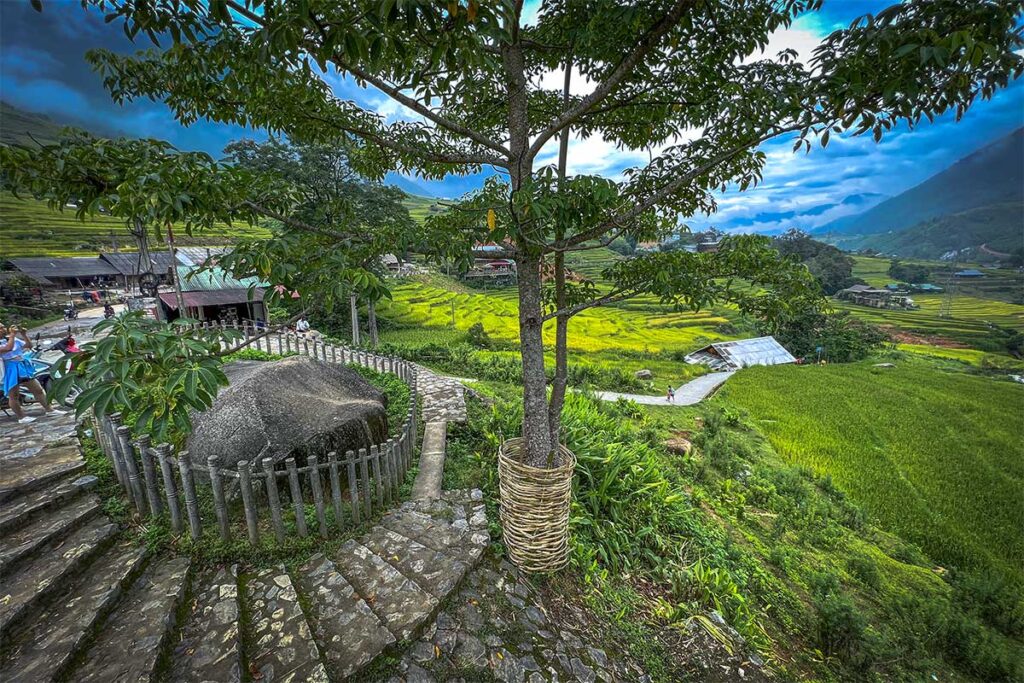
The Sapa Ancient Rock Field, located within Muong Hoa Valley, is an archaeological site featuring large stones carved with ancient petroglyphs. These carvings, believed to be several thousand years old, offer a fascinating glimpse into the prehistoric cultures that once inhabited the area. The carvings include depictions of human figures, symbols, and animals, providing valuable insights into the ancient societies.
While the rocks themselves might not be the most spectacular highlight, the surrounding scenery is beautiful, with lush greenery and terraced fields providing a picturesque backdrop. The rock field is accessible via a short hike.
10. Coffee with a View in Muong Hoa Valley
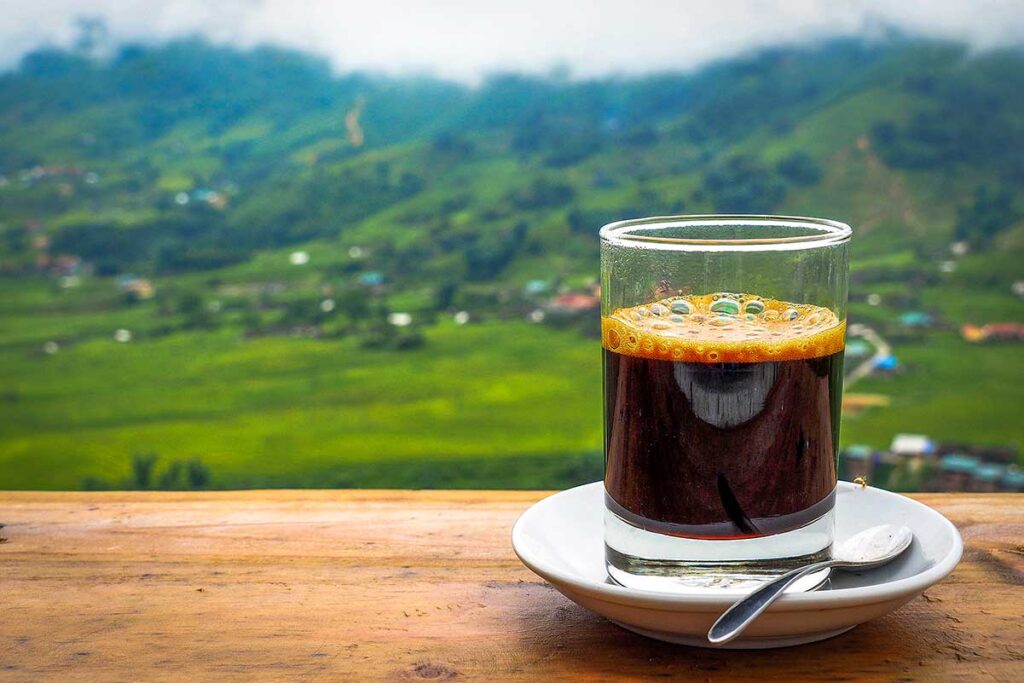
After a day of exploring, relaxing with a hot chocolate on cold days or a cold refreshing drink on warm days while enjoying an amazing view can sometimes be the highlight of the day. Several cafes in the valley offer stunning views of the landscape, making them perfect spots to unwind. Watching the sunset or, if the place is open early enough and you don’t mind waking up early, catching the sunrise over the terraced fields can be a magical experience. Here are a few recommended places:
- Sailing Sapa (Google Maps)
- Fansipan Terrace Café & Homestay (Google Maps)
- Viet Trekking Homestay and Cafe (Google Maps)
- Sapa Sky View Restaurant & Bar (Google Maps)
Best time to visit Muong Hoa Valley
Muong Hoa Valley’s scenery transforms dramatically throughout the year, so the experience you have will depend greatly on when you visit. The vibrant green rice terraces you see in photos may not be the same sight you encounter, as the landscape shifts with the seasons. Here’s a breakdown of what to expect each month:
January – February: Cold and potentially foggy, these months are not ideal for trekking but offer a unique, mystical atmosphere.
March: The weather starts to warm up, with less chance of fog. It’s a great time for trekking, as the rice paddies are being prepared for planting.
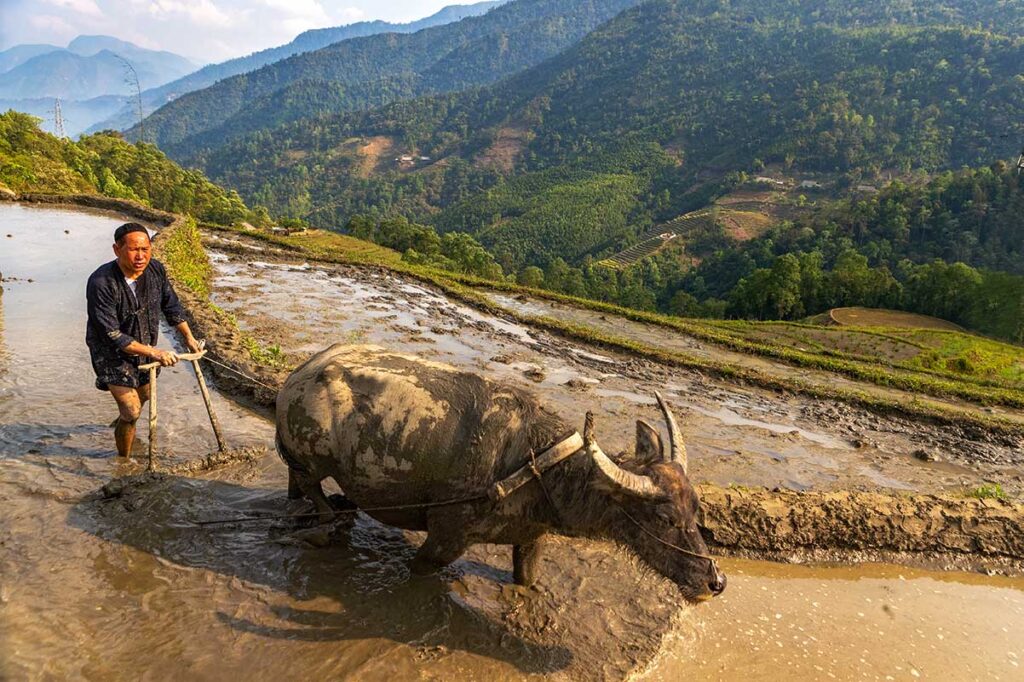
April: Temperatures continue to rise, and the rice fields are filled with water, creating stunning mirror-like reflections. While there’s a slightly higher chance of rain, it’s still an excellent time for trekking.
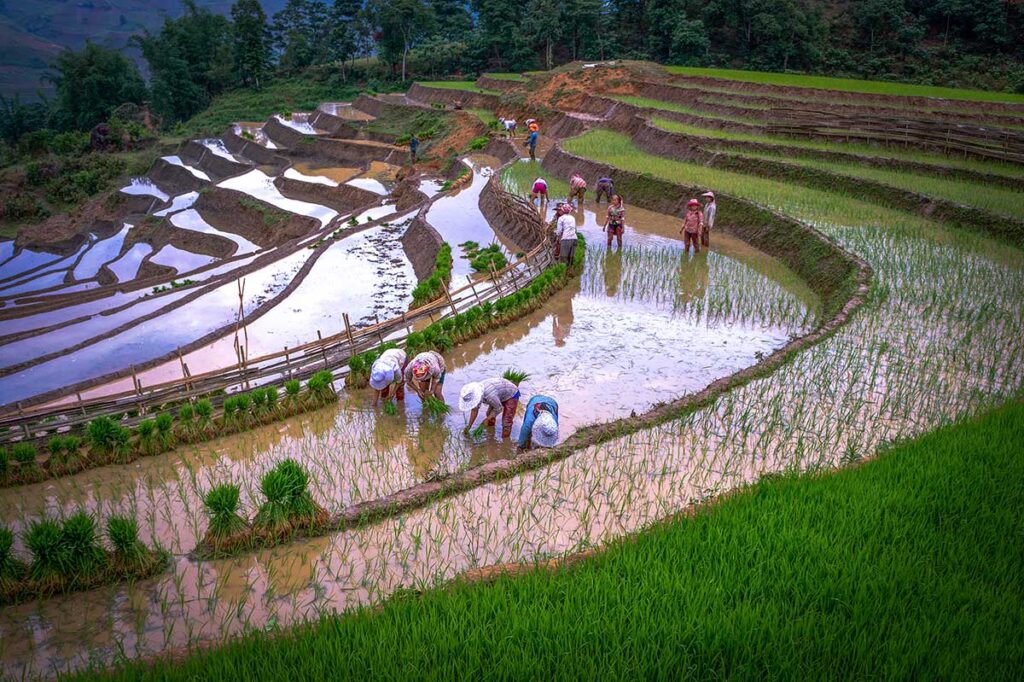
May: The warm weather continues, and the rainy season begins, but it’s not yet at its peak. Trekking is still possible, and the rice fields remain beautifully reflective.
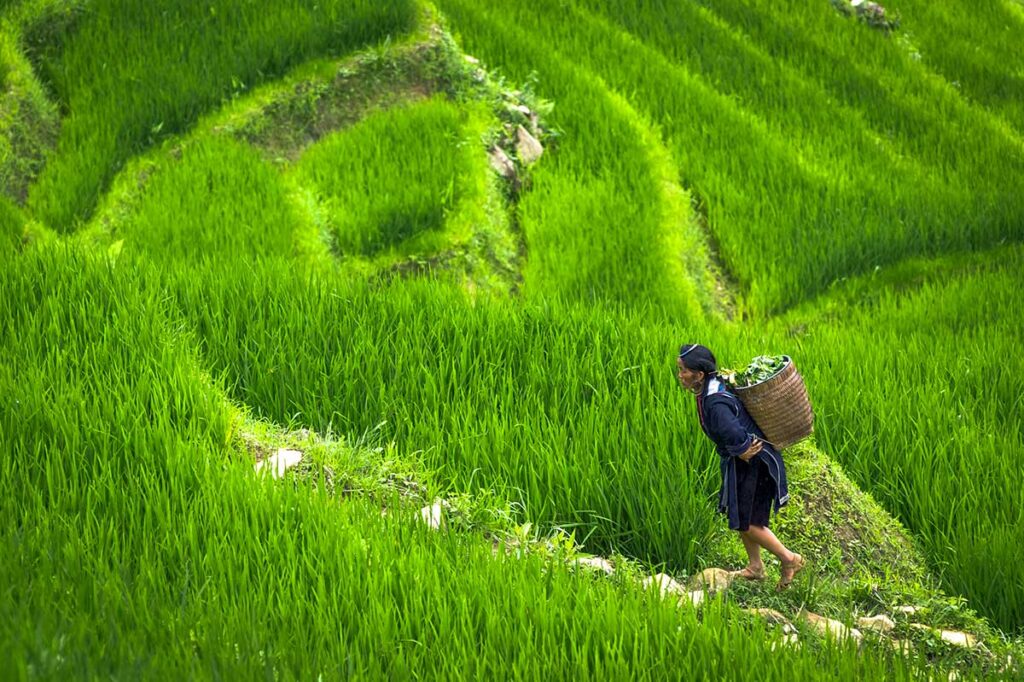
June – August: These are the hottest and rainiest months, with frequent downpours. While the rice terraces are vibrant green, trekking can be challenging due to the wet conditions.
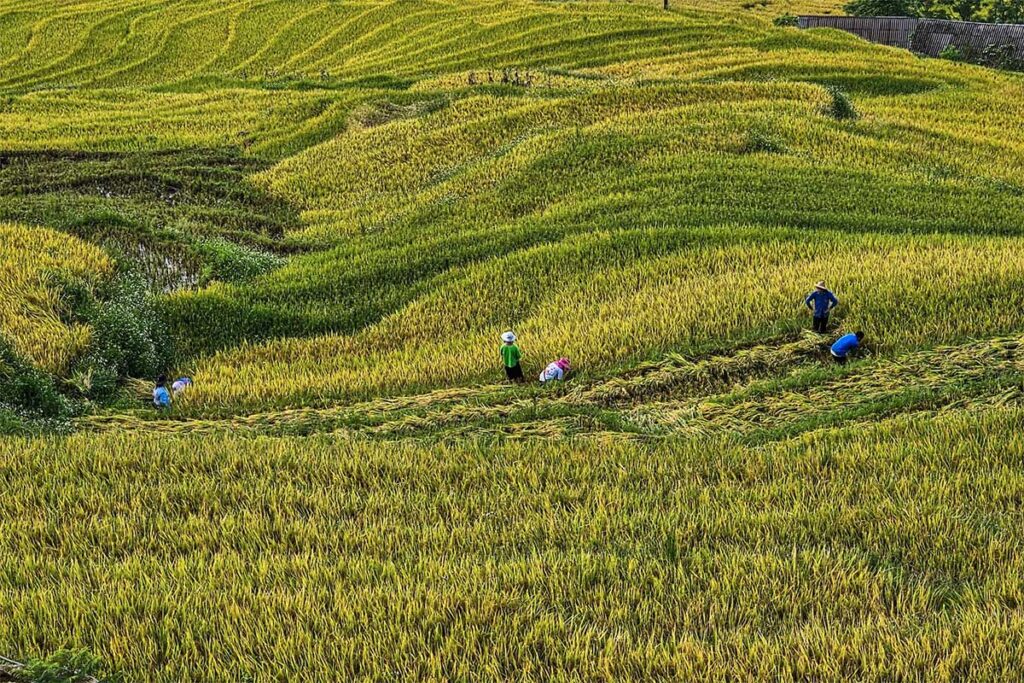
September: The weather starts to cool down, and the rice paddies turn a beautiful golden yellow, ready for harvest. This is a popular time to visit, as the scenery is stunning and trekking conditions are more favorable.
October – November: These months offer the perfect balance of warm temperatures and minimal rainfall, making them ideal for trekking. While the rice has been harvested, the landscape remains picturesque.
December: The weather turns colder and foggier again, creating a mystical atmosphere but making trekking less enjoyable.
Tips for visiting Muong Hoa Valley
How much time to spend
- Non-Trekking Visitors: If you’re not planning to trek, one full day can be enough to visit some villages and viewpoints by car or motorbike. This allows you to enjoy the scenic views and get a taste of the local culture.
- Trekking Enthusiasts: If you’re interested in trekking, a two-day trek with an overnight stay in an ethnic homestay is highly recommended. This offers a deeper immersion into the valley’s natural beauty and cultural richness.
- Additional Days: Consider adding another day in Sapa to explore the town’s sights and visit Fansipan, the highest peak in Vietnam.
Respect the local cultures
The local ethnic groups have different ways of life, and it’s important to respect their customs and traditions. Show appreciation for their hospitality by being polite and open-minded.
Photography with permission
Always ask for permission before taking photographs of local people. This shows respect for their privacy and builds positive interactions.
Don’t step in the rice fields
The rice fields are the livelihood of the local minorities. Avoid stepping into them to prevent damage to the crops and the hard work of the farmers.
Plan your exploration
- Weather and Views: Plan your visit for the best weather conditions or the optimal views of the rice fields. Each season offers different scenic beauty.
- Trekking: Choose a trekking route that matches your fitness level—short, long, or multi-day treks. If trekking is not for you, consider exploring by car or electric buggy for a more comfortable experience.
Prepare for the weather
- Winter: Wear layers to adjust to the fluctuating temperatures. It can get warm during the day and much colder in the evenings.
- Summer: Prepare for hot and rainy weather with a rain jacket, good walking shoes for muddy conditions, and very light breathable clothes to stay comfortable.
Additional Tips
- Local Guide: Hiring a local guide can enhance your experience by providing deeper insights into the area’s history, culture, and natural features. Guides can also help you navigate the best routes and communicate with locals.
- Stay Hydrated and Bring Snacks: Whether trekking or exploring by vehicle, ensure you have plenty of water and snacks. The valley’s exploration can be physically demanding, and staying hydrated and nourished is essential.
